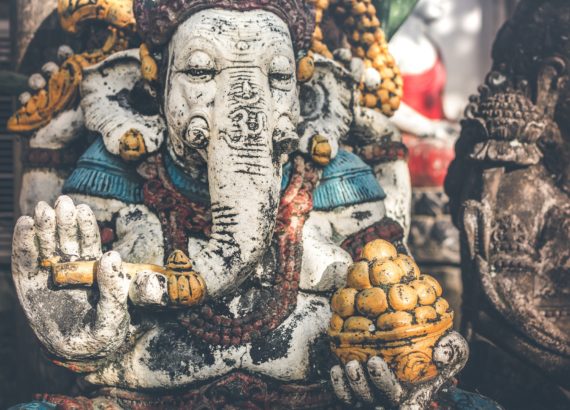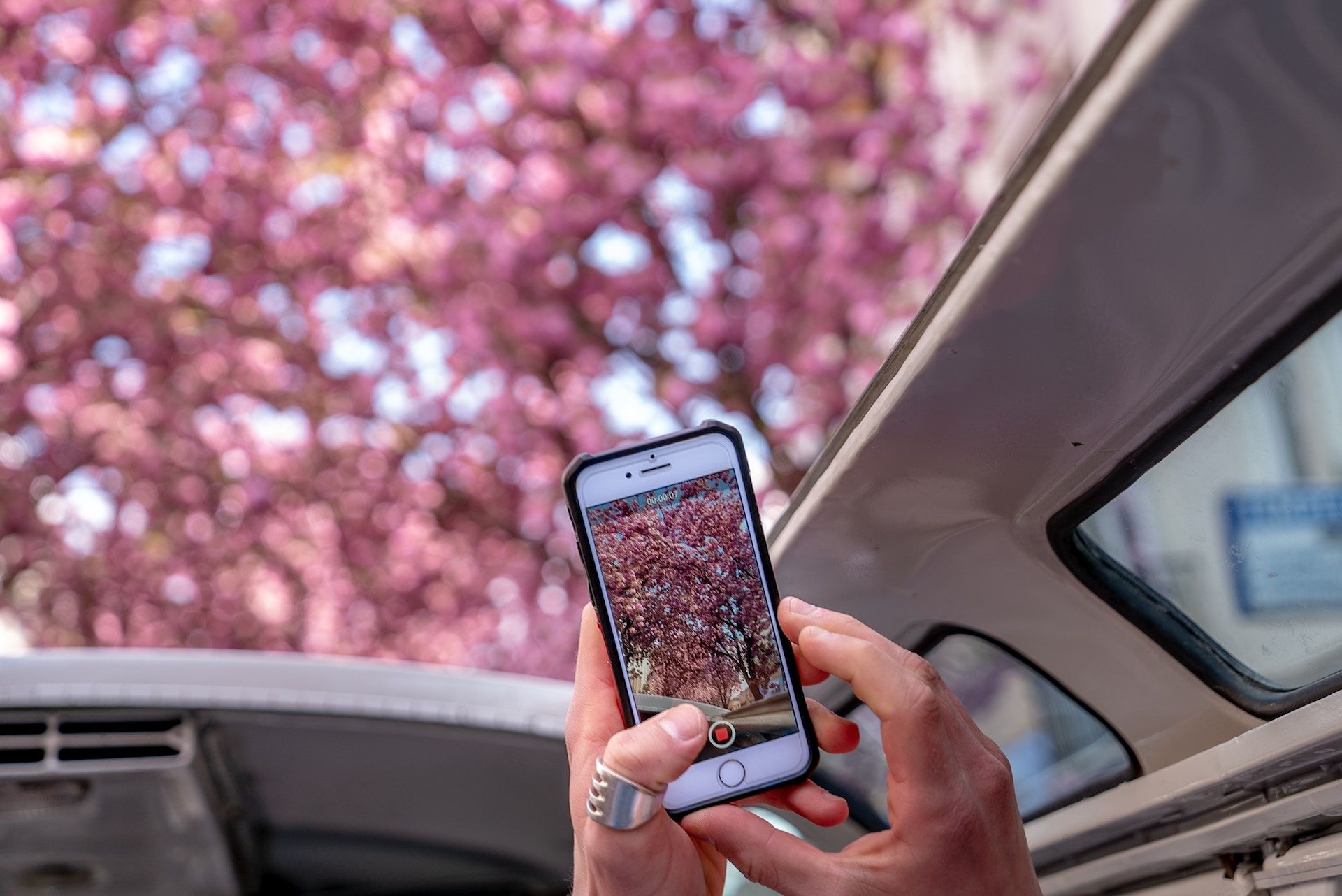Website translation into Korean
Translating your website in Korean can be a difficult and sometimes daunting task. The peculiarities of the Korean language, such as the use of honorifics or different verb forms for expressing social relationship make translation from Western languages rather tricky.
Additionally, the environment for Korean websites differs quite strongly from Western one. This applies both to website design as well as how Koreans use social media and search engines.
Koreans are also big users of e-shopping and e-commerce generally, often preferring to pre-order a product online instead of physically shopping. When it comes to shopping online, Koreans buy both domestic products and Western ones regularly (especially clothes). As such, it would be very advantageous to have a online store for any website aimed at a Korean audience.
The main trends in Korean website design
If your accustomed to European or North America web design, Korean websites might appear busy, cluttered, and text-heavy. Korean websites developed quite independently from Western influence and have their own style and expectations to them. As a general rule, Koreans tend to look at a website as whole and value its overall feel rather than the design of individual sections.
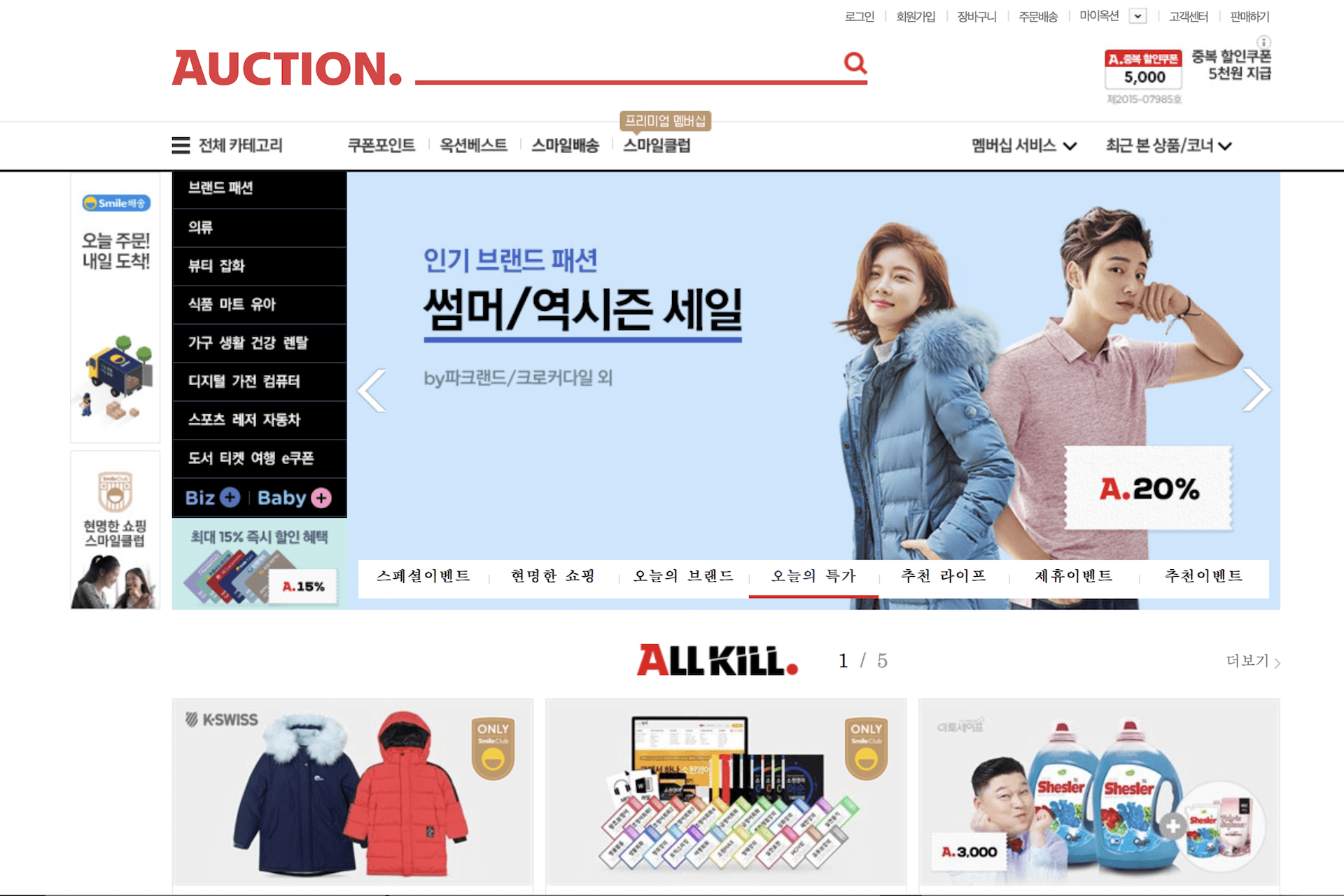
While white space is a somewhat encouraged in Western web design, Korean sites have much less blank space on a given page. Consider the extensive ‘clutter ‘of the popular Korean shopping sites http://gmarket.co.kr/ and http://www.auction.co.kr/. Of course, exceptions do exist, such as the blogging platform https://tistory.com/ which has much more spaced-out and colourful aesthetic.
Overall, Korean websites tend to not use flashy or overly loud colours. The concept of hyperlinks being in blue can sometimes be true in Korean websites, but isn’t a hard and rule. Additionally, the colour red should be avoided for certain text, especially for names since there’s a long standing superstition about writing names in red ink. However, there are some exceptions. The American brand Costco, for example, has its logo with its own name in red, which has not been altered for its numerous Korean locations.
The Korean language has its own alphabet called Hangeul that is quite different from the latin alphabet. Letters are arranged in ‘blocks’ that contain two to three letters moving from left to write. Historically, Korean was also written vertically, but this is now extremely uncommon and only reserved as a stylistic choice. Since Hangeul is so different from latin, the same rules about fonts do not apply. For example, putting Korean script in italics would be more or less impossible. Professional fonts would include Han Serif and Nanum Gothic as well as Nanum Barun Gothic. Conversely the font 나눔손글씨펜 is often considered to be the Korean version of comic sans and should be avoided.
Photo: www.freekoreanfont.com
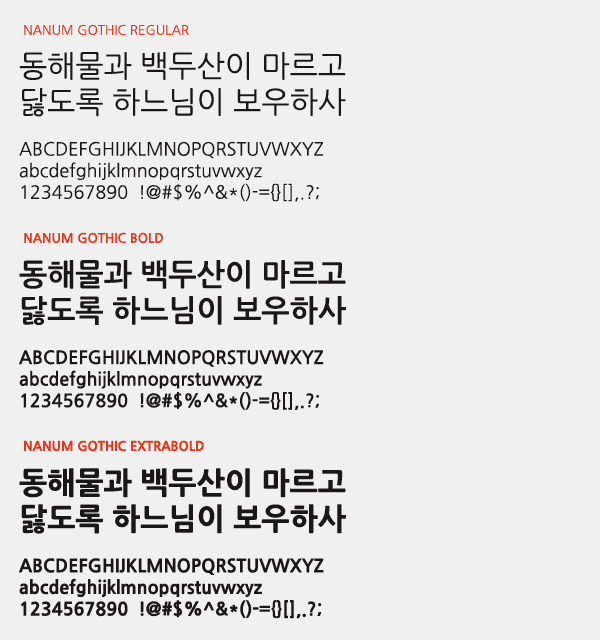
Mobile friendly website is a must in Korea
The stereotype of phone-fixated Koreans is strongly rooted in reality. Koreans mostly use their phones as the primary means of using the internet and many people will carry around spare phone batteries since they use them so extensively. Using one’s phone to pay bills, do shopping, arrange transport, and utilise social media is the norm in South Korea. As such, if you want to be available to a Korean audience, having an attractive and functioning mobile site is paramount.
Most popular domains in Korea
Korean internet access is quite free regarding foreign websites. The only major restrictions to web-services in South Korea are sites that pornography or drug use. Due to this freedom to access foreign sites, one’s choice of domain shouldn’t make much of a difference to Korean audiences. In fact, many larger Korean website use a .com domain themselves instead of the domestic .ko.
Korean SEO peculiarities
It is worth noting that Korea’s major search engines strictly separate sites using blogs and websites as separate categories. In particular, the search engine Naver prioritises blogs and puts them at the top of search results, while placing websites at the bottom. Consequently, it would be advantageous to make sure that your site is classified as a blog.
As with search engines, Koreans generally prefer to use domestic websites instead of Western ones when it comes to blogging. Sites like WordPress and Magento aren’t well known in South Korea as the scene is dominated by Korean sites like Tistory and NaverBlog. Like most Korean websites, any blogging platform will almost certainly have an available mobile version, if not its own app.
Naver is the most popular search engine in Korea
Bucking the global trend, the transnational search engine giant Google hasn’t gotten much traction in South Korea. Instead, most Koreans prefer to use domestic sites with Naver (네이버)being the most popular by far. As of 2019, Naver handles about 3/4 of South Korea’s web searches and is the default page for most web browsers in the country. The rest of web searches are done mostly using Google and the Korean site Daum.
While search engine optimization has become essential for getting traffic on Google or Bing, Naver’s search engine works using entirely different algorithms, which are based on the Korean alphabet rather than the latin one. One could even say that Naver operates less like a search engine and more like a community platform, and therefore its search engine gives preferential treatment to site using Naver platforms (e.g. Naver Blog, Naver Cafe). As such SEO isn’t as important or as possible in Korea without investing in the use of Naver-based sites.
Koreans are well presented in social media
South Korea has one of the highest rates of active social media users in the world, regularly ranking in the top 5 globally. However, the social media environment of Korea has developed outside of the Western giants like Facebook, Google, and Twitter and uses a variety of domestic application.
Far and away, the number one social media app in Korea is Kakoa talk. This is more or less a messaging service, similar to WhatsApp, but with more extensive features.
There’s a tie-in application that’s much more focused on social media called KakoaStory. Many Korean consider Facebook to be quite invasive to their privacy and prefer KakaoStory as a platform that’s more personal and less public.
As such, it’s much more likely for a Korean company to have a KakoaStory than to have any presence on Facebook or a WeChat page. That being said, Instagram has been making strong inroads into the Korean market.
The tone and honorifics are essential when translating your website into Korean
The Korean language has an extensive system for expressing social relationships between speaker and audience, often referred to as honorifics. These forms of address are determined by the relative ages and social positions of the speakers. In fact, it is impossible to communicate in a social ‘neutral’ tone since social relationship are also expressed by how verbs are formed. As difficult as the idea may be to understand, it is a very important element of the language as using the wrong honorific can cause offence.
Unfortunately, there are no hard and fast rules about which politeness level to use in advertising since the thing being advertised will determine the appropriate level of politeness. For example, advertising toothpaste would use a somewhat informal tone while commercials for insurance would use something more formal. While the trend in Korean advertisements has been moving towards a more informal tone in advertising, it’s best to compare with commercials for a similar product before choosing which tone and honourifics to use.
Pitfalls to avoid when translating your website into Korean
Most taboos in Korean culture refer to behaviour or social conduct, so translators don’t have to worry too much. Koreans are adverse to mentions of overt sexuality and drugs of any kinds, but this shouldn’t be a problem. However, Koreans do tend to be more indirect than Westerners, so overt or overly direct descriptions could be off-putting.
There is one typographical superstition to be aware of however, the use of red ink. For Koreans, writing a person’s name in red ink is a widespread taboo. As such, no name, especially not the name of a product should be written in red.
It’s also worth noting that South Korea has an ongoing rivalry and animosity with Japan stemming from the Japan’s previous occupation of the peninsula. With that in mind, it’s best to avoid any references or comparisons to Japan all together. There are also several long standing controversies of geography between the two nations. This includes an ongoing dispute about an island group known in Korean as Dodko (called the Liancourt Rocks in English) and the name for the Sea of Japan, which Koreans call the East Sea. Accordingly, If your website includes any maps of South Korea, make sure that they use the label ‘the East Sea’ and label the Liancourt Rocks as Dodko and are marked as Korean sovereignty.
On the flip side, the Korean language of today is larded with a wide spectrum of English loanwords, ranging from the technical to the everyday. If your product has a name in English (or another Western Language), don’t feel as though you have to translate it or even render it in Hangeul. Keeping a products name closer to its original can give a Korean audience a feeling of high quality sometimes.
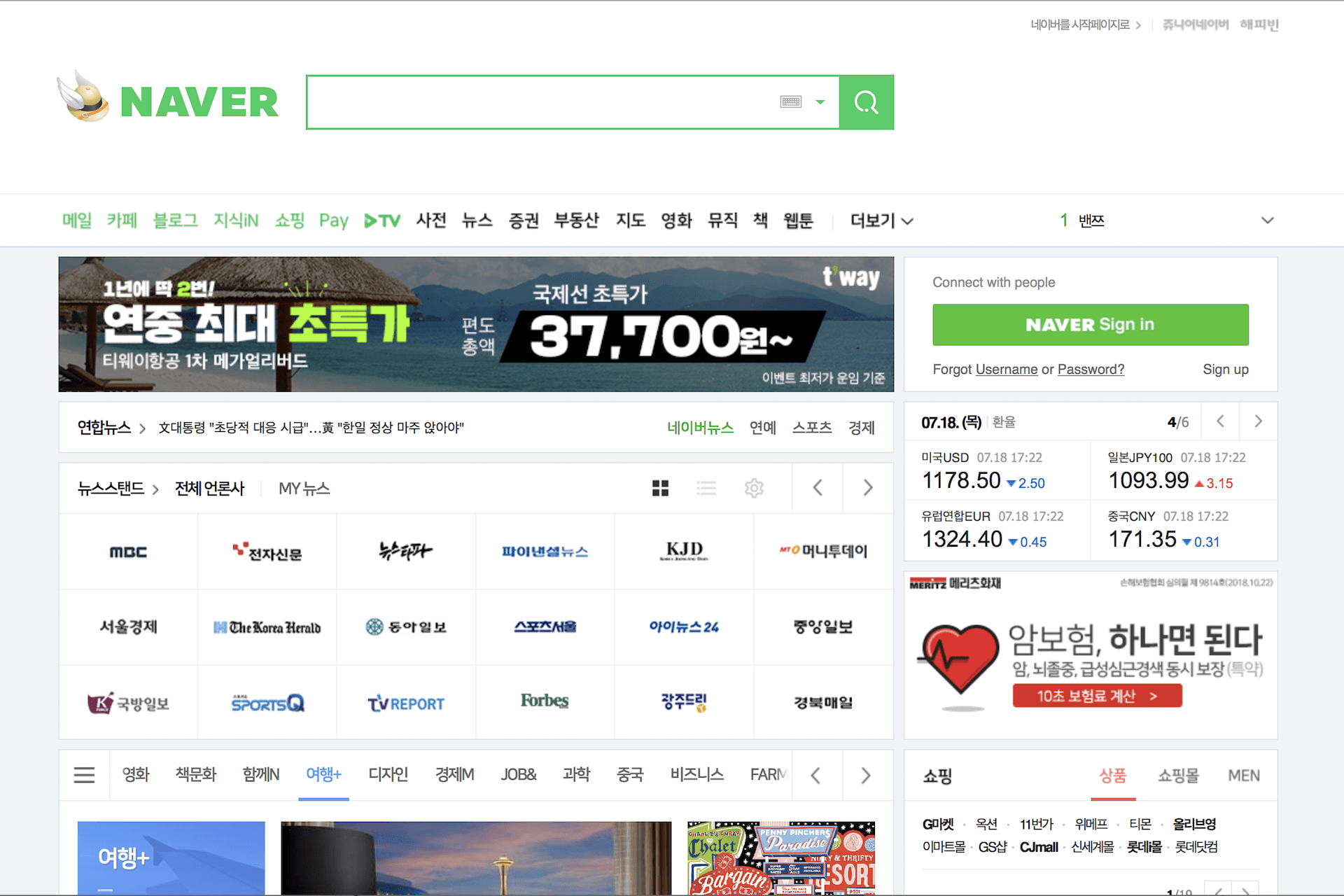
Supersticion according to numbers in Korea
As in Japan and China, the number four is considered unlucky in Korea. The fear of the number four (tetraphobia) actually comes from a shared linguistic quirk, since the words for ‘four’ and ‘death’ are both pronounced as (sah) in Korean. This discomfort can be seen in most Korean buildings where there will be no fourth floor and elevators buttons will often read 1, 2, 3, F, 5 or not include the fourth floor at all, especially in hospitals. Consequently, April 4th is considered an exceptionally unlucky day by most Korean.
This aversion to the number four is however mitigated when accompanied by other numbers and increased with repetition. As an example, apartments will sometimes not have the number 404 and South Korea’s national rail service skipped having a model 4444 in their fleet of trains. However, a single four with other numbers, such as 401, isn’t any cause for aversion.
The most popular apps in Korea
In the past, Koreans have greatly preferred domestic apps, but Western programs are starting to make inroads. For messaging KakoaTalk is still the dominant application. For social media, KakaoStory is the most popular, additionally the older generation uses Daum and Band while the younger generation has begun to adapt Facebook. That being said, most Koreans are at least aware of the larger Western tech giants even if they don’t use them.
Popular apps in South Korea include:
Naver: the giant of South Korea, with platforms for social media, search engines, and video sharing. Being familiar with Naver is a must for understanding the Korean webscape. Extensions include the social media site NaverCafe and the blogging platform NaverBlog.
KakoaTalk: A Korean messaging service similar to WhatsApp, but with many features unique to the app. Additionally, it’s better suited for text in the Korean alphabet.
KakaoStory: A social media platform, similar to Facebook, but more private.
Line: A messaging service popular in Asia.
Check out these other posts from our blog
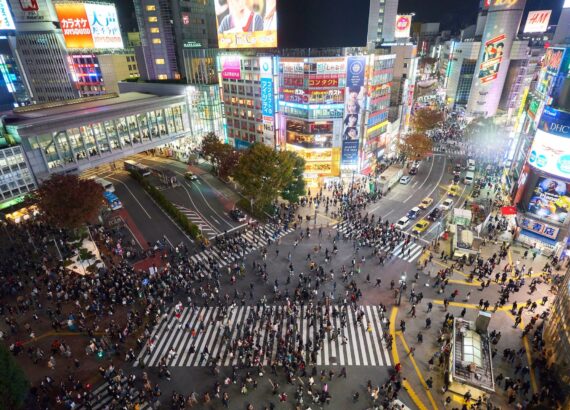
Website translation into Japanese

Website translation into Chinese
